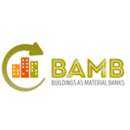Building levels
Contents |
Definition
Defining different building levels is a way to analyse buildings by breaking them down into successively smaller or simpler units, e.g. into elements, components and materials.
However, depending on the purpose of the analysis, buildings can be broken down in various ways, e.g. by functional, physical, legal or economic characteristics. Accordingly, a common terminology could not be developed.
Guidelines
Whenever the deconstruction of a building into successively smaller parts is proposed or adopted, further clarification will be indispensable. Only for the levels ‘building’ and ‘material’ could a general definition be found. The levels in-between both vary according to the purpose.
The necessary clarification should not only present the introduced hierarchy and the different levels it includes. Also, the characteristics that determine to which level a certain assembly or part belongs should be defined unambiguously.
Because of the consistent interpretation of their meaning throughout different domains, the use of terms ‘part’ and ‘assembly’ is encouraged. Nevertheless, for both terms it is useful to clarify whereof and of what the considered unit is a part or assembly. After all, every unit can be a part of a larger part and the assembly of several smaller assemblies at the same time. For instance, a window, an assembly of parts such as glass panes and aluminium profiles, is only a part of the building façade.
It is impossible to define unambiguously the however frequently used terms ‘component’ and ‘element’. If these terms would be used for one or more specific purposes, a corresponding definition should be provided in this common language.
Related terms
Building: construction providing space to persons, their activities or belongings. Generally, it is a complicated assembly of building materials.
Material, building ∼: a raw material or bulk product used to construct buildings, e.g. lime, sand, clay and cement, as well as wood, concrete, natural stone and bricks, zinc, glass, stucco, paint and so on.
Part, building ∼: a subdivision of a more complicated entity. It is advised to state of what entity the described subdivision is a part; not just “a part”, but “a part of…”.
Assembly, building ∼: a group of less complex entities. It is advised to state of what entities the described group is an assembly; not just “an assembly”, but “an assembly of…”.
System, building ∼: a group of less complex entities characterised by a specific relation describing how the constitutive parts (can) work together or how they are connected, as in ‘open building systems’.
References
Haslinghuis E. and Janse H. (1997) Bouwkundige termen: verklarend woordenboek van de westerse architectuur-en bouwhistorie. Primavera: Leiden.
ISO (2013) ISO 15686-11 Buildings and constructed assets, Service life planning – Part 11 Terminology. International Organisation for Standardisation
De Troyer F. and Sarja A. (1998). Open and Industrialised Building, A Review of Approaches and a Vision for the Future. E & FN Spon, London.
--BAMB - Buildings As Material Banks 07:56, 15 Aug 2018 (BST)
Featured articles and news
RTPI leader to become new CIOB Chief Executive Officer
Dr Victoria Hills MRTPI, FICE to take over after Caroline Gumble’s departure.
Social and affordable housing, a long term plan for delivery
The “Delivering a Decade of Renewal for Social and Affordable Housing” strategy sets out future path.
A change to adoptive architecture
Effects of global weather warming on architectural detailing, material choice and human interaction.
The proposed publicly owned and backed subsidiary of Homes England, to facilitate new homes.
How big is the problem and what can we do to mitigate the effects?
Overheating guidance and tools for building designers
A number of cool guides to help with the heat.
The UK's Modern Industrial Strategy: A 10 year plan
Previous consultation criticism, current key elements and general support with some persisting reservations.
Building Safety Regulator reforms
New roles, new staff and a new fast track service pave the way for a single construction regulator.
Architectural Technologist CPDs and Communications
CIAT CPD… and how you can do it!
Cooling centres and cool spaces
Managing extreme heat in cities by directing the public to places for heat stress relief and water sources.
Winter gardens: A brief history and warm variations
Extending the season with glass in different forms and terms.
Restoring Great Yarmouth's Winter Gardens
Transforming one of the least sustainable constructions imaginable.
Construction Skills Mission Board launch sector drive
Newly formed government and industry collaboration set strategy for recruiting an additional 100,000 construction workers a year.
New Architects Code comes into effect in September 2025
ARB Architects Code of Conduct and Practice available with ongoing consultation regarding guidance.
Welsh Skills Body (Medr) launches ambitious plan
The new skills body brings together funding and regulation of tertiary education and research for the devolved nation.
Paul Gandy FCIOB announced as next CIOB President
Former Tilbury Douglas CEO takes helm.
UK Infrastructure: A 10 Year Strategy. In brief with reactions
With the National Infrastructure and Service Transformation Authority (NISTA).























